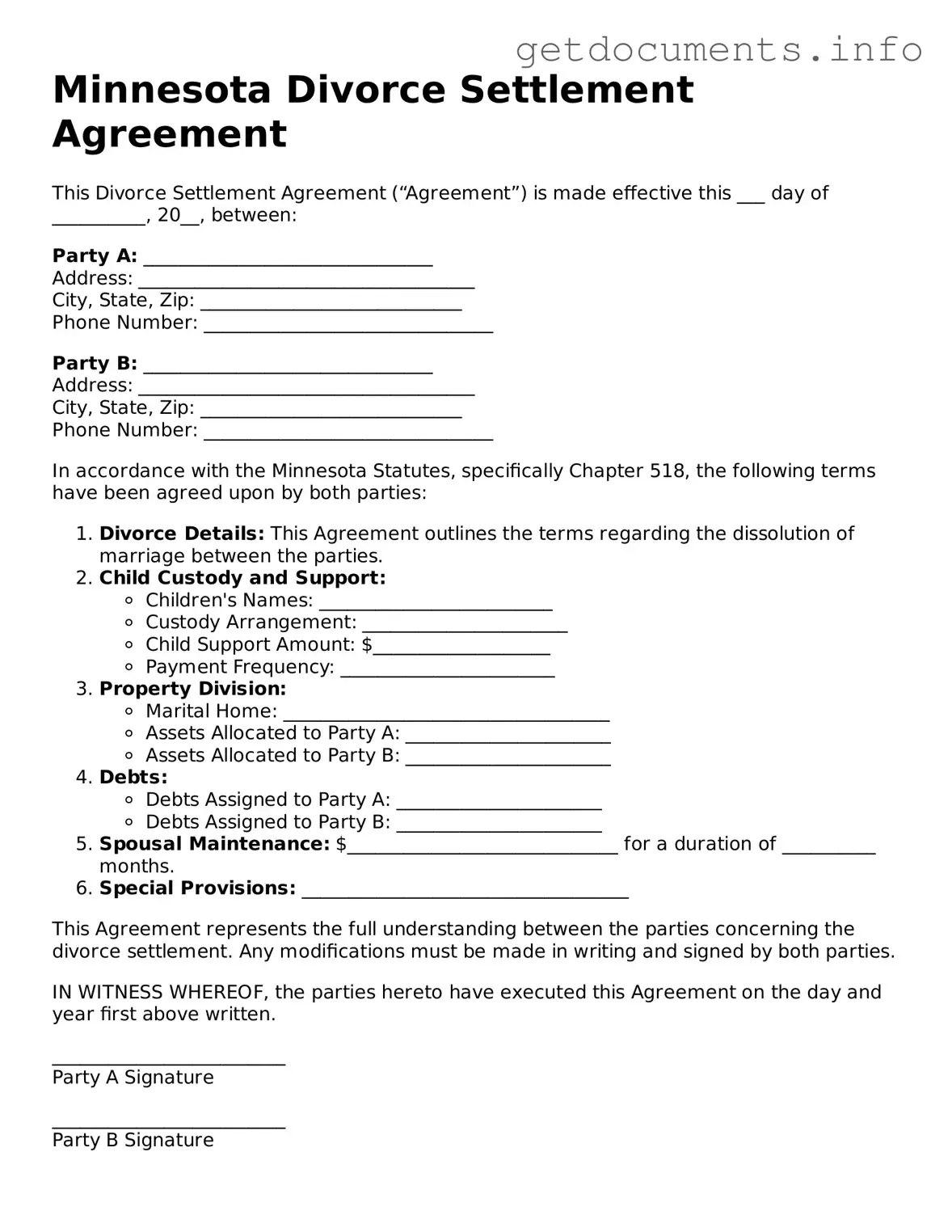Free Divorce Settlement Agreement Template for Minnesota
The Minnesota Divorce Settlement Agreement form is a legal document that outlines the terms agreed upon by both parties during a divorce. This form addresses key issues such as property division, child custody, and spousal support. Completing this agreement is essential for a smooth divorce process, so take the next step by filling out the form below.
Access Divorce Settlement Agreement Editor
